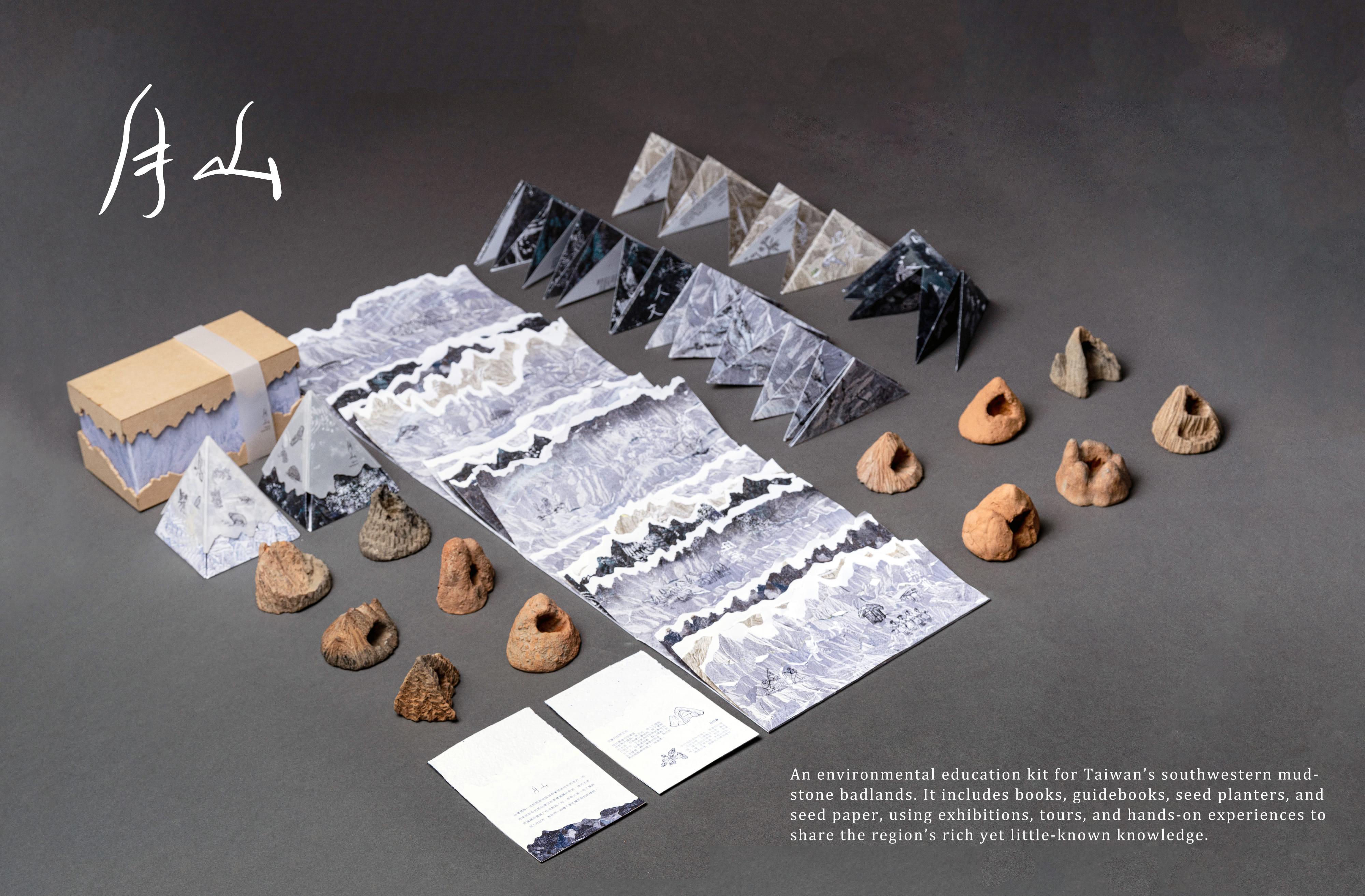
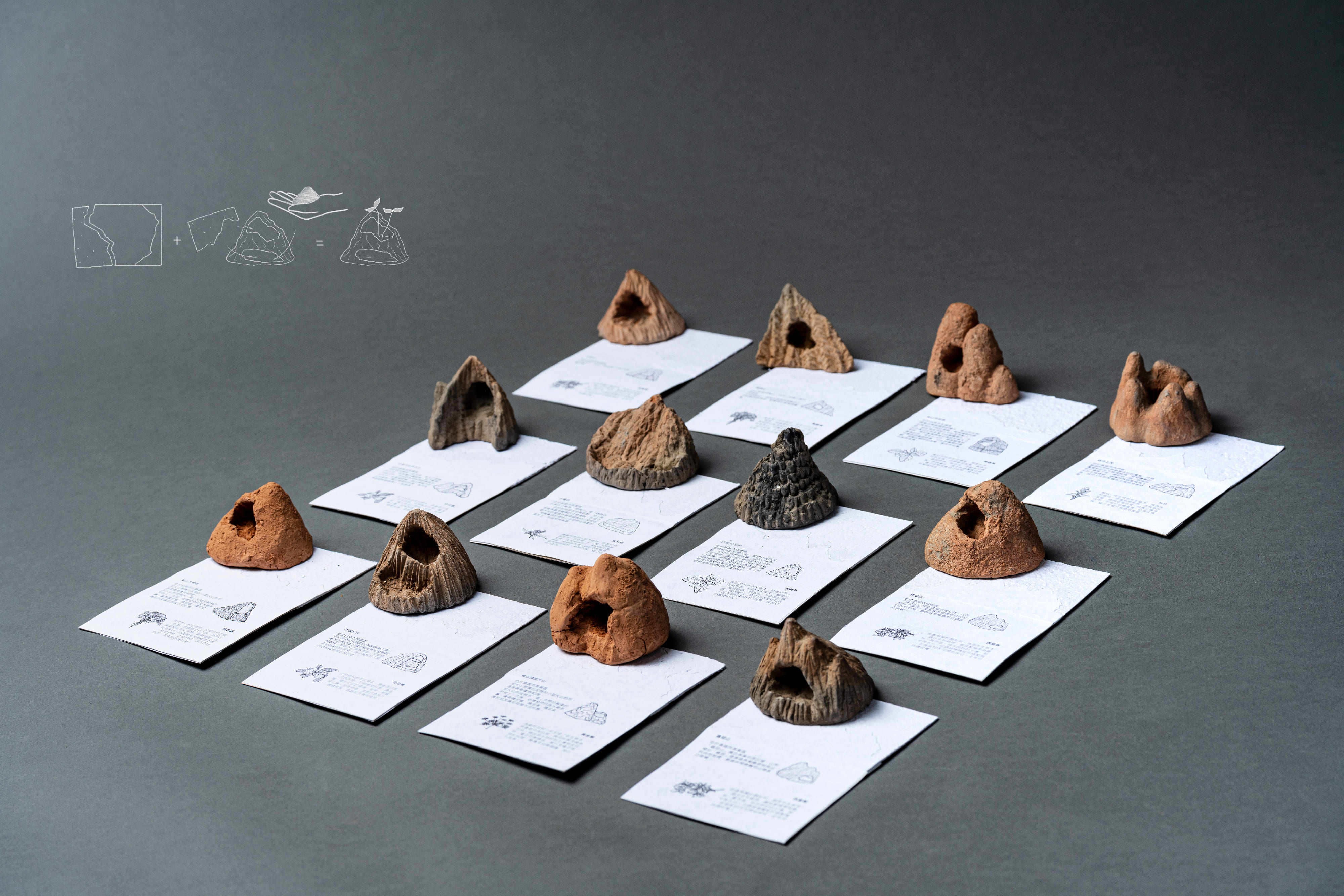
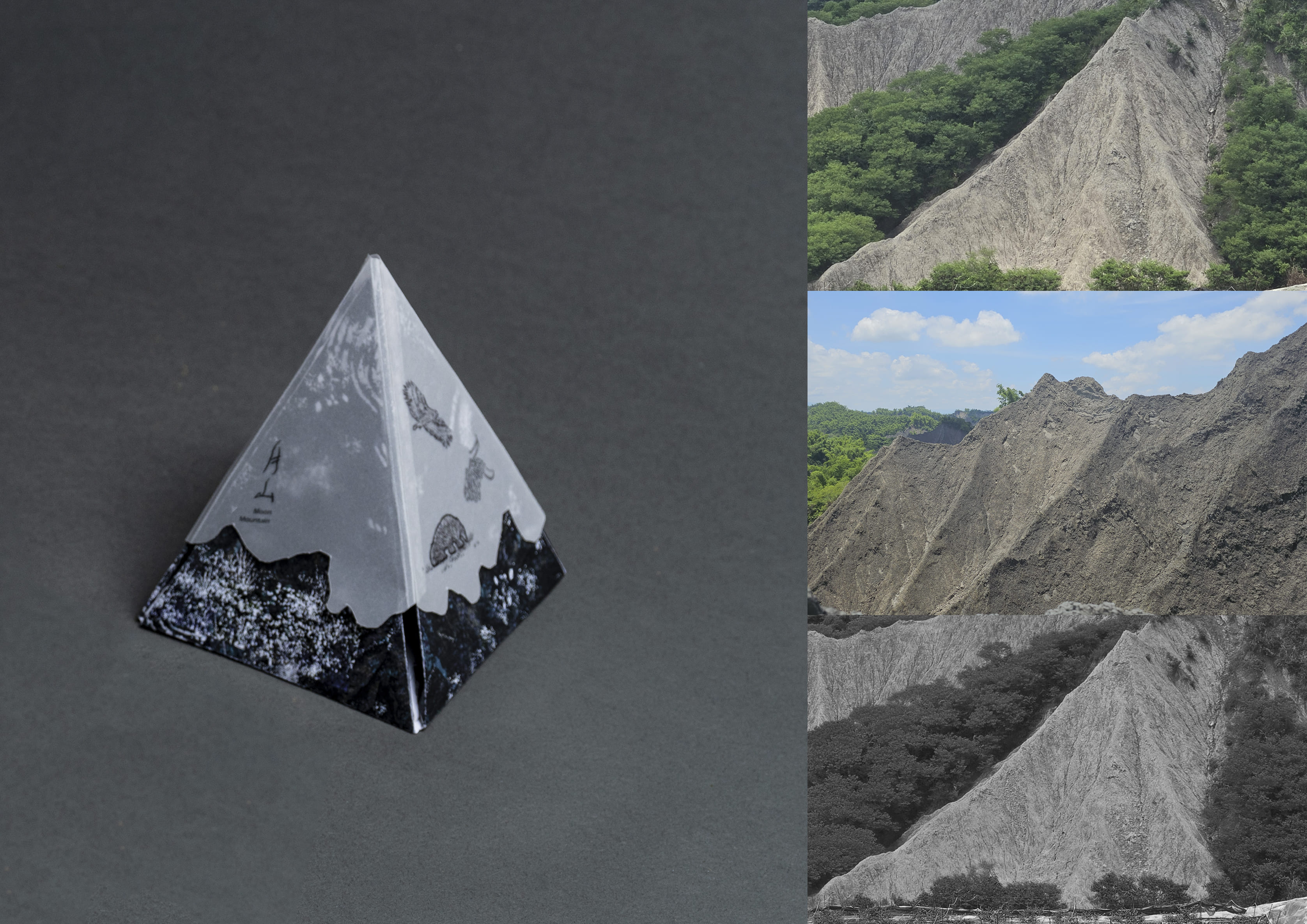
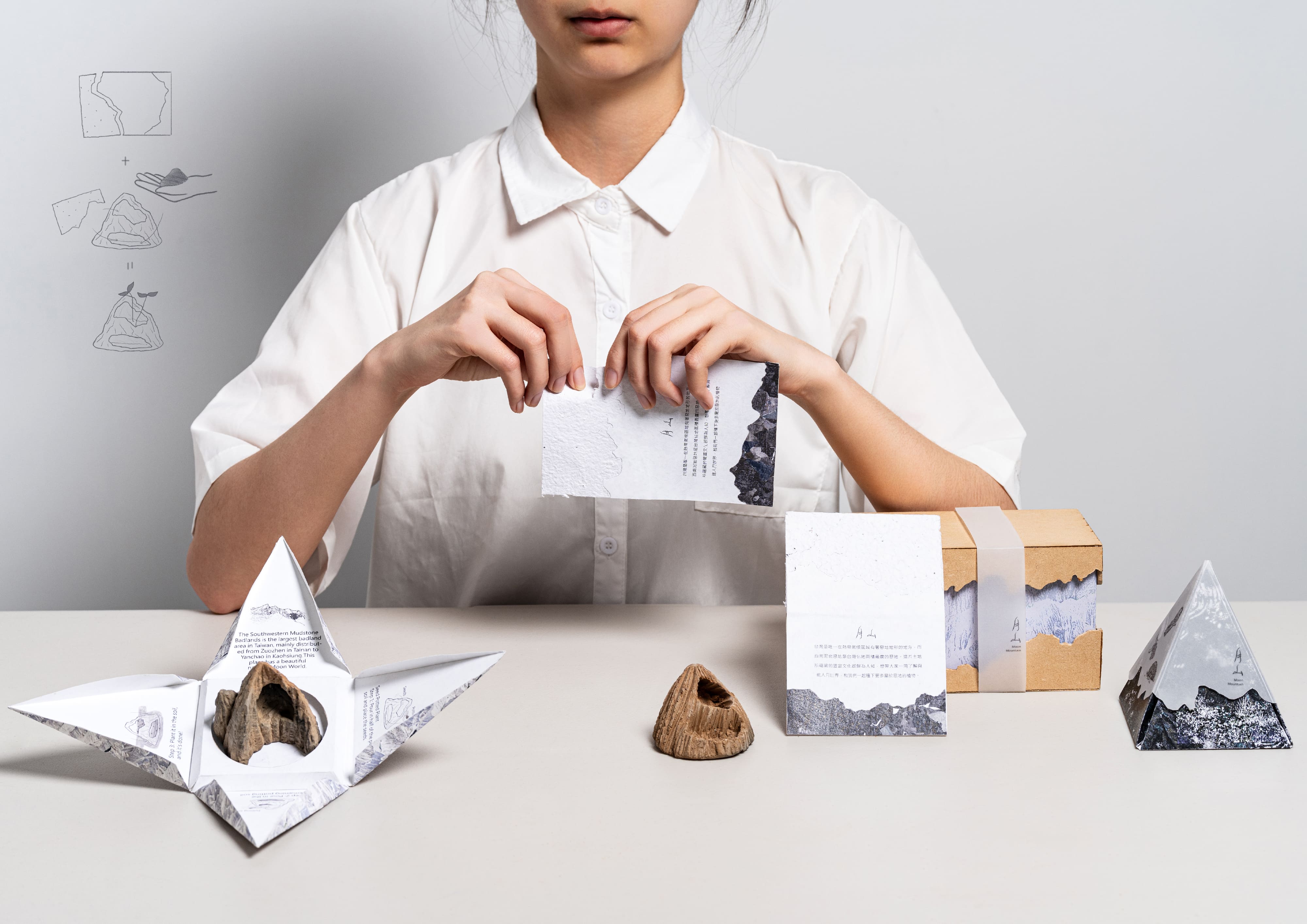
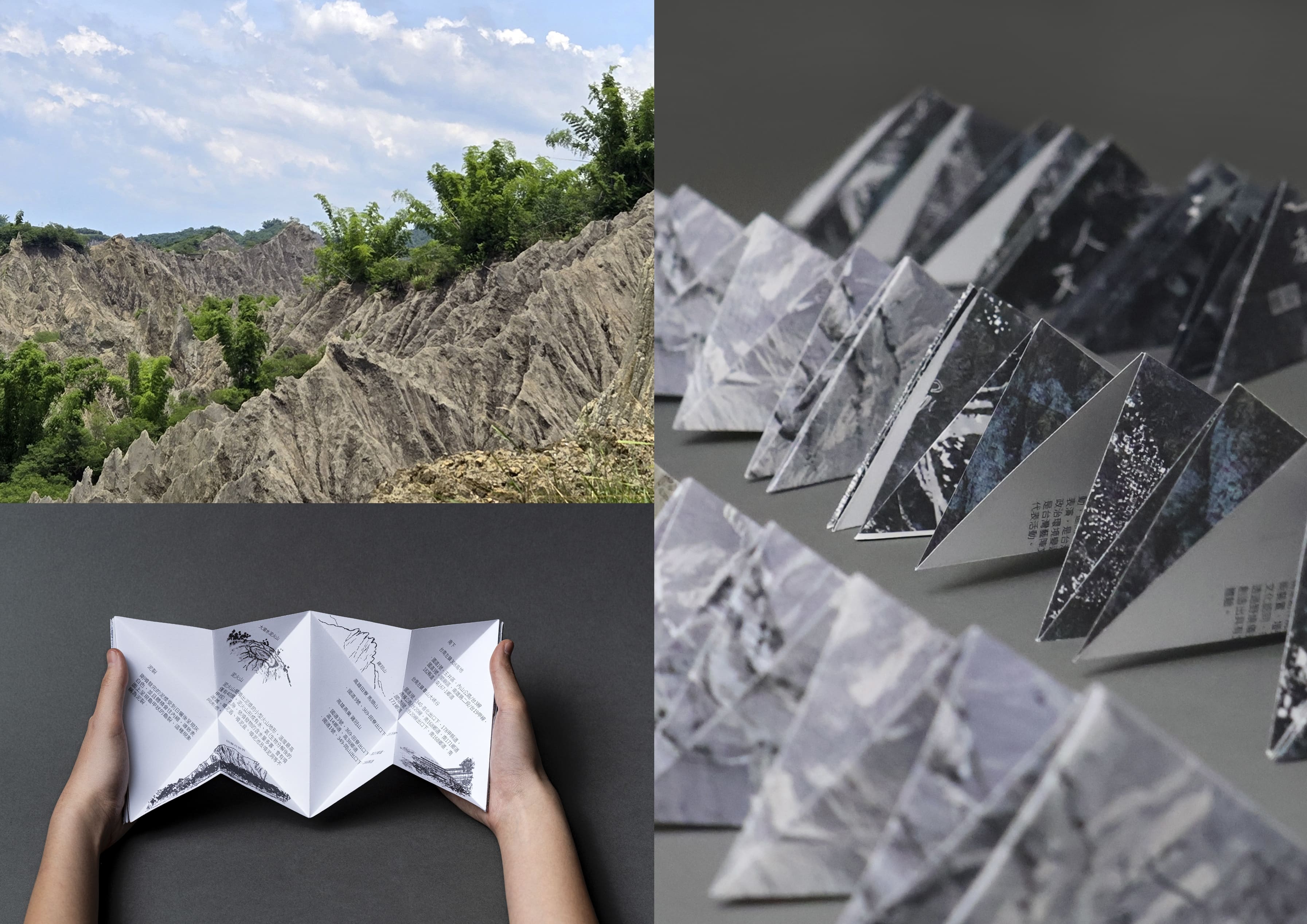
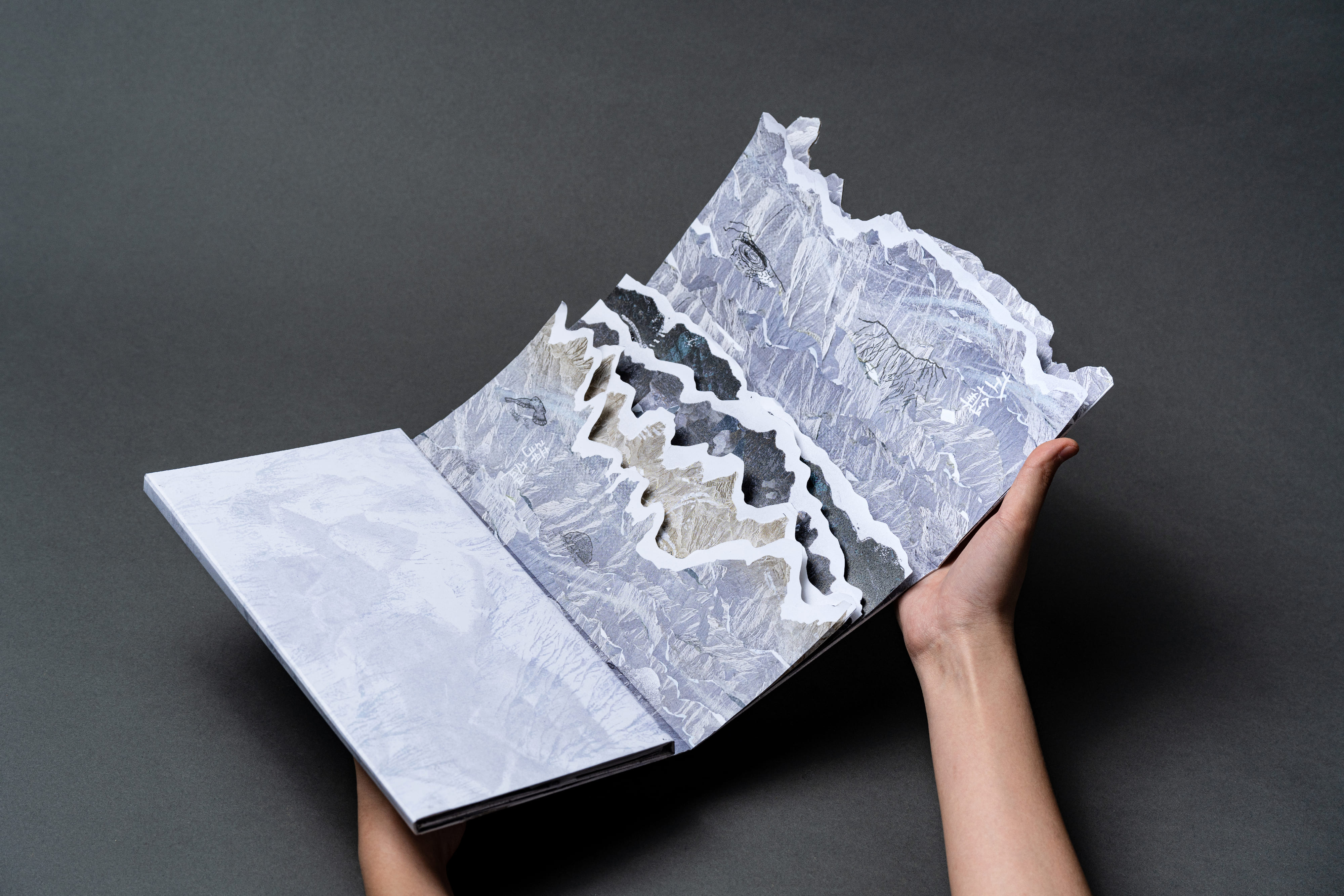
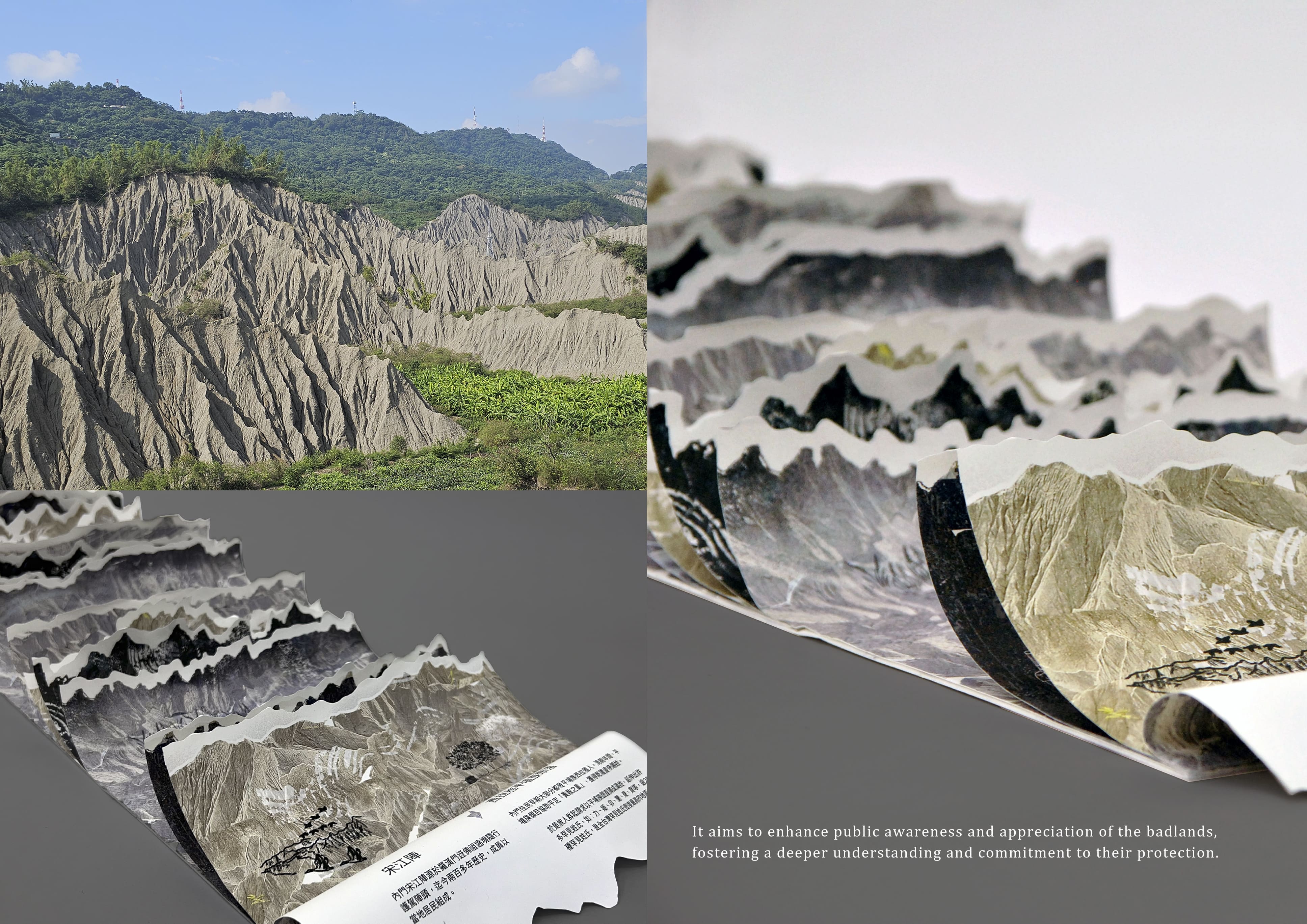
月山是針對臺灣西南泥岩惡地所設計的環境教育推廣體驗套組,包含環境教育書、導覽手冊及種子盆栽、種子紙。將惡地所蘊藏豐富卻鮮為人懂的知識透過展覽、教育、走讀、體驗、收藏的方式,以多重實踐的角度推廣給民眾。
惡地環境教育書以層層堆砌的裝幀方法立體化模擬台灣西南泥岩惡地連綿的山形走勢,融合地貌紋理,呈現月世界獨特的白天、晚上、黃昏、雨天四種環境色彩及並以單色插畫繪製惡地地景、生態、產業、人文,引導民眾感受惡地環境、認識惡地知識。導覽手冊則透過折疊出方便攜帶的三角形口袋書的方式,將教室內學習的知識濃縮其上,便於走讀時拿出對照、翻摺,展開時呈現群山的意象,恍若走在龍脊上。
種子盆栽則是以月世界當地雨後溢流的白堊土加以揉塑、雕刻出12款月世界特有地景為造型,並與當地民眾合作以「野燒」的方法燒製成型,體驗活動時可藉由盆栽上的造型與刻紋特徵認識小玉山、大峽谷、馬頭山、太陽谷等惡地地景外,更可搭配「種子紙」親手將盆栽埋入土中實踐惡地環境復育行動,亦可將其帶回成為惡地體驗的文創紀念品。希望藉由這套推廣工具,讓民眾認識惡地、親近惡地、體驗惡地、珍藏惡地,建立守護惡地環境意識,實踐土地永續價值行動。
"Moon Mountain" is an environmental awareness experiential learning kit
designed specifically for Taiwan’s southwestern mudstone badlands. The
kit includes an environmental education book, a guided tour handbook,
seed bonsai pots, and seed paper. It conveys the rich yet little-
understood knowledge embedded in the badland landscape through
exhibitions, education, guided walks, experiential activities, and
collectibles, offering multiple avenues for public engagement.
The badlands environmental education book employs a layered binding
method to three-dimensionally simulate the undulating mountain
formations of the mudstone badlands, incorporating geological textures.
It presents the distinct environmental hues of Taiwan’s "Moon World"
across different times of the day—daylight, night, dusk—and also in
rainy conditions. Monochrome illustrations depict the badlands’
landscapes, ecosystems, industries, and cultural aspects, guiding readers
to experience and understand the unique environment. The guided tour
handbook is designed as a foldable, portable triangular pocket book,
incorporating essential classroom knowledge for easy reference during
field excursions. When unfolded, it echoes the mountain vistas, evoking
the sensation of traversing a ridgeline.
The seed bonsai pots are crafted from locally sourced chalky soil, which
overflows in Moon World after rainfall. This material is hand-kneaded,
sculpted into 12 unique forms representing the distinct landscape
features of the badlands, and then fired using the traditional "wild firing"
technique in collaboration with local residents. During hands-on
activities, participants can identify various landforms such as Hsiao yu
san, Da Sia Gu, Ma Tou Shan, and Sun Valley by examining the distinctive
shapes and engraved patterns on the pots. Additionally, by pairing the
pots with seed paper, participants can personally bury them in the soil,
contributing to the ecological restoration of the badlands. These pots
can also serve as creative cultural souvenirs, preserving the memory of
the badland experience.
Through this toolkit, the initiative seeks to foster public awareness,
appreciation, and engagement with the badlands by encouraging people
to explore, experience, and cherish the landscape while cultivating a
deeper commitment to environmental conservation and sustainability.